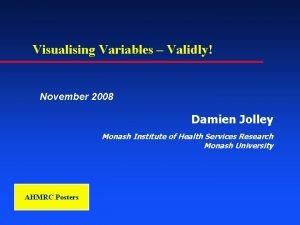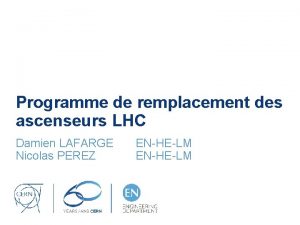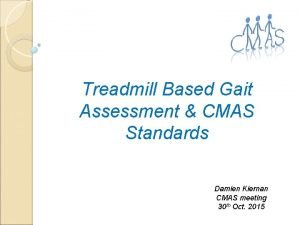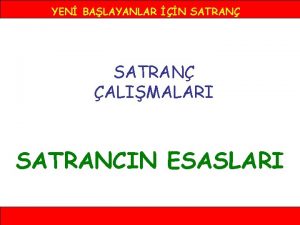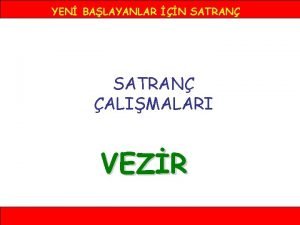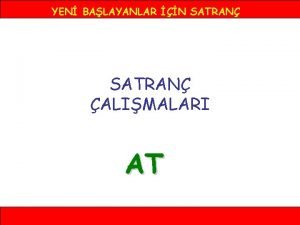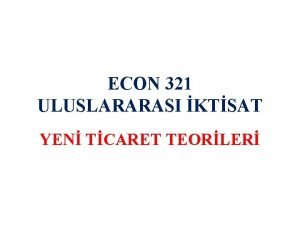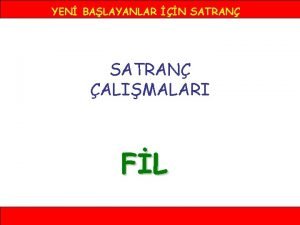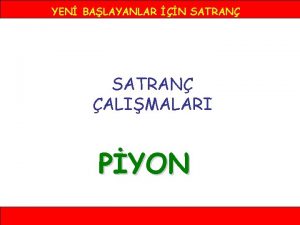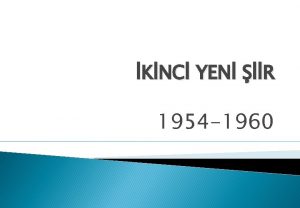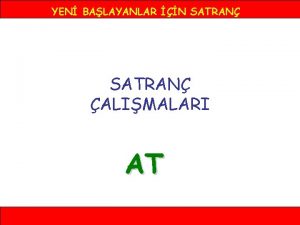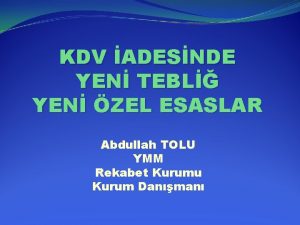Whats New In Trauma Damien Ah Yen Trauma


















- Slides: 18

What’s New In Trauma? Damien Ah Yen Trauma and General Surgeon Waikato Hospital

What’s New? • Little progress in Operative Management • Progress Non Operative Management (NOM) • Sometimes LESS surgery is MORE • Angioembolization • Selective NOM of penetrating abdominal injury • With some exceptions… • Rib Fixation

Rise of Angioembolization • Endovascular techniques used in trauma 1990 s • Adjunct of Non-Operative Management (NOM) • From paediatric NOM experience • Principles • Gel foam vs Coils • Selective vs Non-selective • What types of injuries? • Solid Organ Injuries • Spleen • Liver • Kidneys • Pelvic fractures with vascular injury

Angioembolization • Spleen • Who? • “Stable patients” Transiently responsive? • • AAST Grade ≥ 4 Contrast Blush Arterial Injury Hemoperitoneum • Efficacy • Improves success of NOM up to 97% in the high grade injuries • Major complications – 9% re-bleed or major infarction requiring splenectomy

Angioembolization • Hepatic Injuries • Who? • Stable patients • No consensus • Contrast blush • High grade injury (AAST ≥ 4) • Unstable patient: Operative adjunct • Hepatic arterial bleed • Efficacy • 93% effective in haemorrhage control • Complications (11%) • Liver and gallbladder necrosis (majority) • Bile leak • Liver failure

Angioembolization • Renal • Who? • No consensus • Stable patients • AAST Grade ≥ 4 • Extravasation of contrast or arterial injury • Peri-renal hematoma rim ≥ 3. 5 cm • Efficacy • Re-intervention rate 83% • AE failure rate 27%

Angioembolization • Pelvic haemorrhage associated with an unstable pelvic fracture • Mortality up to 33% - polytrauma with pelvic ring fractures • Who? • Haemodynamically unstable • CT confirmed bleed • Contrast blush? • Efficacy • One series report 0% mortality in AE group vs 20% in the non-AE • Morbidity associated with delay to AE • ARDS, transfusion requirement, MOF • Complications • Access site (up to 9%) • Nephropathy (24%) • Claudication, skin necrosis, erectile dysfunction (rare)

Selective NOM of Low Velocity Penetrating Abdominal Injury

History • Mandatory Exploratory Laparotomy: ‘standard of care’ until 1960 s • Up to 45% are non-therapeutic • 20% complications • Selective Non-Operative Management • There is a role of selective approach • Diagnostic accuracy of various modalities is variable • Other factors add to the complexity • Resource constraints • Local expertise and team infrastructure • Volume

Selection • Clinical • Assessable • Generalised peritonism, evisceration, and instability exploration • Imaging • USS • CT • Interventional (diagnostic +/- therapeutic) • Local Wound Exploration • Laparoscopy

Algorithms • Several algorithms • All reduce non-therapeutic laparotomies • Combination of modalities mentioned before • Principles • Selection of those at ‘low risk’ • Assessable • No peritonism, no evisceration, haemodynamically stable and normal CT • Active observation (serial exams, blood tests, regular observations) of those for NOM • Access to OT with experienced operators

Algorithm

Thoracoabdominal wounds • Risk for diaphragmatic injuries • Low threshold for laparoscopy • CT is not very good at excluding diaphragm injury

Role of Rib Fixation • Rib fractures are common • Rib fractures increased morbidity and mortality • Risk worsened by age and other co-morbidities • Multiple aspects of “bundled care” • • Identification of ‘at risk patients’ Multimodal analgesia Pulmonary Hygiene OPERATIVE INTERVENTION

Role of Rib Fixation • Been around a while – dates back 1950 s • Different fixation devices • Generally in and out of favour • 1970 s benefit in the flail chest • Currently there is increasing interest in selected cases

Role of Fixation • Who? • De Moya et al, 2017

Role of Rib Fixation • Benefit • • Pneumonia reduction Reduction of ICU stay Reduced tracheostomy rates Earlier return to work

Summary • Angioembolization is an adjunct to NOM of solid organ injuries and it is the standard of care for haemorrhage associated with pelvic fractures • Consider NOM for stab wounds to the abdomen in the absence of peritoneal signs and haemodynamic instability • • Select those who are suitable for this approach CT is useful in stratifying risk Laparoscopy is safe in experienced hands to explore the abdomen Low threshold for a laparotomy • Chest injury management is multi-modal and multidisciplinary • Identify the ‘high risk’ • Provide adequate analgesia • Look out for those who may benefit from rib fixation
 Damien ah yen
Damien ah yen Damien ringuenet
Damien ringuenet Pauquet diététicien
Pauquet diététicien Damien givry
Damien givry Damien darcy
Damien darcy Damien ettere
Damien ettere Damien neven
Damien neven Mother and child, divided
Mother and child, divided Away from the flock damien hirst
Away from the flock damien hirst Damien jolley
Damien jolley Damien lafarge
Damien lafarge Damien
Damien Marie louise damien
Marie louise damien Damien pauquet recettes
Damien pauquet recettes Elementos da linguagem visual cor
Elementos da linguagem visual cor Damien coleman
Damien coleman Damien kiernan
Damien kiernan Damien contandriopoulos
Damien contandriopoulos Damien charles weber
Damien charles weber









